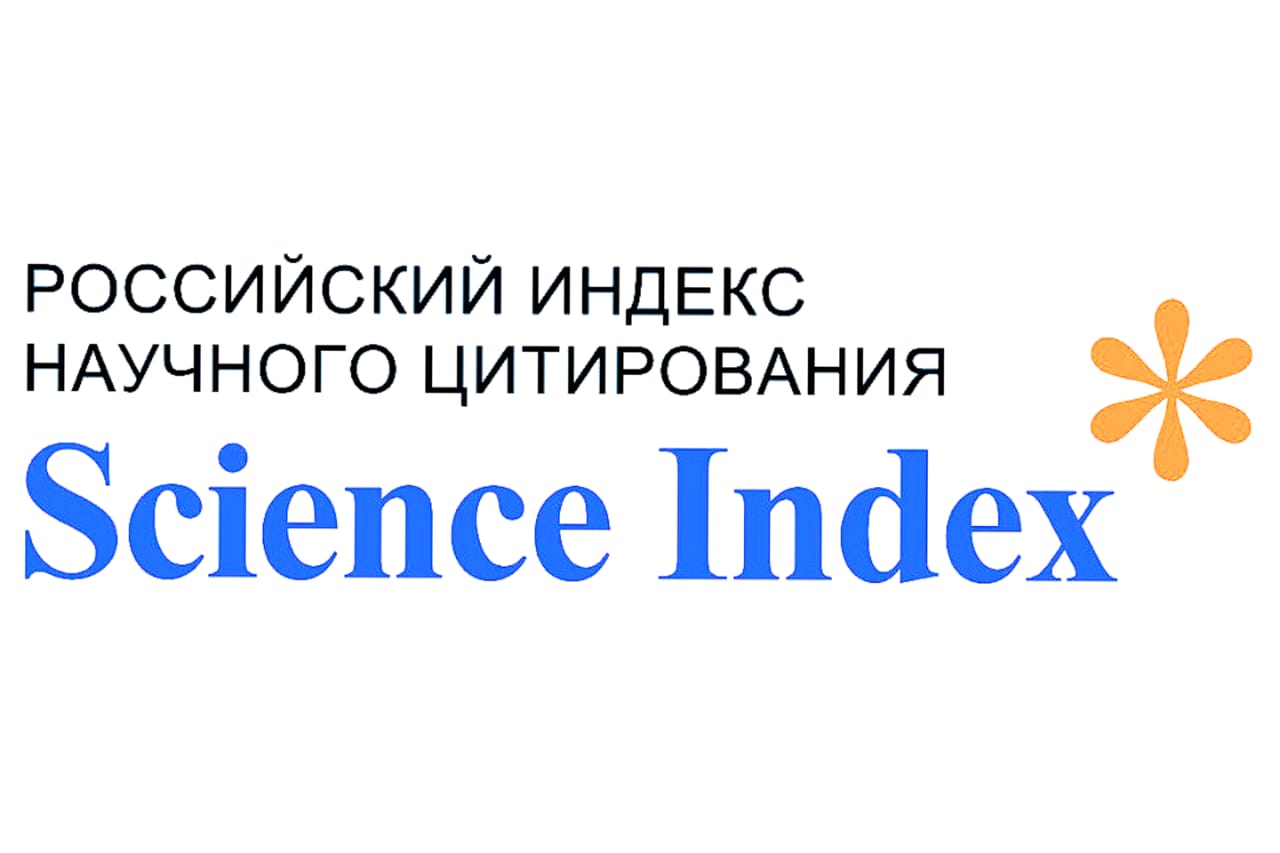Качественные характеристики Infraspnatus (IS), Triceps brachii (TB), Longissimus thoraces (LT), Biceps femoris (BF), Semitendinosus (ST)) и Semimembranosus (SM) мышц бактрианов. Бакриандардың Infraspnatus (IS), Triceps brachii (TB), Longissimus thoraces
110 68
Ключевые слова:
акриан, верблюд, мышцы, качество мяса, бактриан, түйе, бұлшық еттер, ет сапасы,Аннотация
Целью данного исследования было оценить и сравнить качественные характеристики Infraspnatus (IS), Triceps brachii (TB), Longissimus thoraces (LT), Biceps femoris (BF), Semitendinosus (ST)) и Semimembranosus (SM) мышц девяти туш бактрианов. Индивидуальные мышцы были собраны для измерения цвета, выжатого сока, потерь приготовления, рН, длины саркомера, мягкости, индекса миофибриллярных фрагментаций. Это исследование показало, что характеристики качества мяса варьировались в зависимости от типов мышц верблюдов-бактрианов и знание этих изменений позволяет лучше продавать и перерабатывать верблюжье мясо. Бұл зерттеу жұмысының мақсаты – тоғыз бактриан түйесінен алынған Infraspnatus (IS), Triceps brachii (TB), Longissimus thoraces (LT), Biceps femoris (BF), Semitendinosus (ST) жəне Semimembranosus (SM) бұлшық еттерінің сапалық қасиеттерін бағалау жəне салыстыру. Бұлшық еттің сапалық қасиетін анықтайтын параметрлер ретінде еттің түсі, бөлетін шырыны, піскенде жоғалтатын салмағы, pH, саркомер ұзындығы, еттің жұмсақтығы жəне миофибрилярлық фраргментациялық индексі өлшенді. Зерттеу жұмысы еттің сапалық қасиеттерінің ұқсамаған бұлшық еттер арасында əртүрлі болатындығын көрсетті жəне бұл көрсеткіштер болашақта түйе етінен əртүрлі ет өнімдерін алуда, сондай-ақ түйе еті маркетингіне жол ашуда алатын маңызы зор.Библиографические ссылки
1 Kadim I. T., Mahgoub O. and Purchas R.W. A review of the growth, and of the carcass and meat quality characteristics of the one-humped camel
(Camelus dromedaries) // Meat Science. – 2008. –V.80. – P. 555-569.
2 Dawood A., Alkanhal M.A. Nutrient composition of Najdi-Camel Meat // Meat Science. – 1998.– V. 39. – P. 71-78.
3 Knoess K. The camel as a meat and milk animal // World Animal review. – 1977. – V. 22. – P. 3-8.
4 Mukasa-Mugerwa E. The camel (Camel dromedaries): A biographical review. – Addis Ababa, Ethiopia: International Livestock Centre for Africa. –1997. – P. 144.
5 Rawdah T.N., El-Faer M.Z. and Koreish S.A. Fatty acid composition of the meat and fat of the onehumped camel (Camelus dromedaries) // Meat Science.– 1994. – V. 37. – P. 149-155.
6 Giese J. Developing low fat meat products // Food Technology. – 1994. – V. 46. – P. 100-108.
7 Kurtu M.Y. An assessment of the productivity for meat and carcass yield of camel (Camelus dromedarious) and the consumption of camel meat in the Eastern region of Ethiopia // Tropical Animal Health and Production. – 2004. – V. 36. – P. 65-76.
8 Bendall J.R. Post-mortem changes in muscle /In: Bournr G.H. The structure and function of muscle.– New York: Academic Press, 1973. – 2nd ed. – P.243-309.
9 Lindahl G., Henckel P., Karlsson A. H., Andersen H. J. Signifi cance of early postmortem temperature and pH decline on colour characteristics of pork loin from different rossbreeds // Meat Science.– 2006. – V. 72(4). – P. 613–623.
10 Immonen K., Puolanne E. Variation of residual glycogen glucose concentration at ultimate pH values below 5.75 // Meat Science. – 2000. – V. 55(3). – P. 279–283.
11 Chrystall B.B., Devine C.E., Davey C.L. Studies in electrical stimulation: post-mortem decline in neverous response in lambs // Meat Science. –1983. – V. 4. – P. 69-78.
12 Al-sheddy I., Al-Dagal M., Bazaraa W.A. Microbial sensory quality of fresh camel meat treated with organic acid slats and /or bifi dobacteria // Journal of Food Science. – 1999. – V. 64. – P. 336-339.
13 Cristofaneli S., Antonini M., Torres D., Polidori P. and Renieri C. Meat and carcass quality from Peruvian Ilama (Lama glama) and alpaca (Lama Pacos) // Meat Science. – 2004. – V. 66. – P. 589-593.
14 Kadim I. T., Mahgoub O., Al-Marzooqi W., Al-Zadgali S., Annamali K., Mansour M. H. Effects of age on composition and quality of muscle Longissimus thoracis of the Omani Arabian camel (Camelus dromedaries) // Meat Science. – 2006. – V. 73. – P.619-625.
15 Kadim I.T., Mahgoub O., Al-Marzooqi W. Meat quality and composition of Longissimus thoracis from Arabian camel (Camelus dromedaries) and
Omani beef: A Comparative Study // Journal of Camelid Science. – 2008. – V. 1. – P. 38-48.
16 Shariatmadari R., Kadivar M. Postmortem aging and freezing of camel meat (a comparative study) // 52nd International Congress of Meat Science and Technology. – Dublin, 2006. – P. 673-674.
17 Suliman G., Sami A., Lowaimer A. and Koohmaraie M. Effect of breed on the quality attributes of camel meat // Indian Journal of Animal Sciences.– 2006. – V. 81. – P. 407-411.
18 Abdelhadi O.M.A., Babiker S.A., Picard B., Jurie C., Jailler R., Hocquette J.F., Faye B. Effect of season on contractile and metabolic properties of desert camel muscle (Camelus xsanguinat) // Meat Science. – 2012. – V. 90. – P. 139-144.
19 Marsh B.B. The basis of tenderness in muscle foods // Journal of Food Science. – 1977. – V. 42. – P.295-297.
20 Thompson J. Managing meat tenderness // Meat Science. – 2002. – V. 62. – P. 295-308.
21 Ashmore C.R., Tompkins G., Doerr L. Postnatal development of muscle fibre types in domestic animals // Journal of Animal Science. – 1972. – V. 34.– P. 37-41.
22 Swatland H. J. The challenges of improving meat quality // Canadian Journal of Animal Science.- 1982. – V. 62. – P. 15-24.
23 Beriain M.J., Bass P., Purroy A., Treacher T. Effect of animal and nutritional factors and nutrition on lamb meat quality // CIHEAM. – 2000. – P. 75-86.
24 Kadim I.T., Mahgoub O., Al-Marzooqi W., Khalaf S.K., Mansour M.H, Al-Sinawi S.S.H., Al-Amri I.S. Effect of electrical stimulation on histochemical muscle fi ber staining, quality and composition of camel and cattle longissimus thoracis muscles. Journal of Food Science. – 2009. – V. 74. – P.44-52.
25 Koohmaraie M. The role of endogenous proteases in meat tenderness // Proceedings of Reciprocal Meat Conference. – 1988. – V. 41. – P. 89.
26 Wheeler T.L., Koohmaraie M. Measurement of Warner-Bratzler shear force in Science and Technology Receprocation Fair // 47th Annual Reciprocal Meat Conference Proceedings, National Livestock and Meat Board, Chicago, 1994. – P. 49-50.
27 Chen Q.H., He G.Q., Jiao Y.C., Ni H. Effects of Elastase from a Bacillus Strain on the Tenderization of Beef Meat. Food Chemistry. – 2006. – V. 98. – P. 624-629.
28 Kemp C.M., Sensky P.L., Bardsley R.G., But tery P.J., Parr T. Tenderness: an Enzymatic View // Meat Science. – 2009. – V. 84. – P. 248-256.
29 Olson D. G., Parrish F. C., Stromer M. H. Myofibril fragmentation and shear resistance of three bovine muscles during postmortem storage // Journal of Food Science. – 1976. – V. 41. – P. 1036–1041.
(Camelus dromedaries) // Meat Science. – 2008. –V.80. – P. 555-569.
2 Dawood A., Alkanhal M.A. Nutrient composition of Najdi-Camel Meat // Meat Science. – 1998.– V. 39. – P. 71-78.
3 Knoess K. The camel as a meat and milk animal // World Animal review. – 1977. – V. 22. – P. 3-8.
4 Mukasa-Mugerwa E. The camel (Camel dromedaries): A biographical review. – Addis Ababa, Ethiopia: International Livestock Centre for Africa. –1997. – P. 144.
5 Rawdah T.N., El-Faer M.Z. and Koreish S.A. Fatty acid composition of the meat and fat of the onehumped camel (Camelus dromedaries) // Meat Science.– 1994. – V. 37. – P. 149-155.
6 Giese J. Developing low fat meat products // Food Technology. – 1994. – V. 46. – P. 100-108.
7 Kurtu M.Y. An assessment of the productivity for meat and carcass yield of camel (Camelus dromedarious) and the consumption of camel meat in the Eastern region of Ethiopia // Tropical Animal Health and Production. – 2004. – V. 36. – P. 65-76.
8 Bendall J.R. Post-mortem changes in muscle /In: Bournr G.H. The structure and function of muscle.– New York: Academic Press, 1973. – 2nd ed. – P.243-309.
9 Lindahl G., Henckel P., Karlsson A. H., Andersen H. J. Signifi cance of early postmortem temperature and pH decline on colour characteristics of pork loin from different rossbreeds // Meat Science.– 2006. – V. 72(4). – P. 613–623.
10 Immonen K., Puolanne E. Variation of residual glycogen glucose concentration at ultimate pH values below 5.75 // Meat Science. – 2000. – V. 55(3). – P. 279–283.
11 Chrystall B.B., Devine C.E., Davey C.L. Studies in electrical stimulation: post-mortem decline in neverous response in lambs // Meat Science. –1983. – V. 4. – P. 69-78.
12 Al-sheddy I., Al-Dagal M., Bazaraa W.A. Microbial sensory quality of fresh camel meat treated with organic acid slats and /or bifi dobacteria // Journal of Food Science. – 1999. – V. 64. – P. 336-339.
13 Cristofaneli S., Antonini M., Torres D., Polidori P. and Renieri C. Meat and carcass quality from Peruvian Ilama (Lama glama) and alpaca (Lama Pacos) // Meat Science. – 2004. – V. 66. – P. 589-593.
14 Kadim I. T., Mahgoub O., Al-Marzooqi W., Al-Zadgali S., Annamali K., Mansour M. H. Effects of age on composition and quality of muscle Longissimus thoracis of the Omani Arabian camel (Camelus dromedaries) // Meat Science. – 2006. – V. 73. – P.619-625.
15 Kadim I.T., Mahgoub O., Al-Marzooqi W. Meat quality and composition of Longissimus thoracis from Arabian camel (Camelus dromedaries) and
Omani beef: A Comparative Study // Journal of Camelid Science. – 2008. – V. 1. – P. 38-48.
16 Shariatmadari R., Kadivar M. Postmortem aging and freezing of camel meat (a comparative study) // 52nd International Congress of Meat Science and Technology. – Dublin, 2006. – P. 673-674.
17 Suliman G., Sami A., Lowaimer A. and Koohmaraie M. Effect of breed on the quality attributes of camel meat // Indian Journal of Animal Sciences.– 2006. – V. 81. – P. 407-411.
18 Abdelhadi O.M.A., Babiker S.A., Picard B., Jurie C., Jailler R., Hocquette J.F., Faye B. Effect of season on contractile and metabolic properties of desert camel muscle (Camelus xsanguinat) // Meat Science. – 2012. – V. 90. – P. 139-144.
19 Marsh B.B. The basis of tenderness in muscle foods // Journal of Food Science. – 1977. – V. 42. – P.295-297.
20 Thompson J. Managing meat tenderness // Meat Science. – 2002. – V. 62. – P. 295-308.
21 Ashmore C.R., Tompkins G., Doerr L. Postnatal development of muscle fibre types in domestic animals // Journal of Animal Science. – 1972. – V. 34.– P. 37-41.
22 Swatland H. J. The challenges of improving meat quality // Canadian Journal of Animal Science.- 1982. – V. 62. – P. 15-24.
23 Beriain M.J., Bass P., Purroy A., Treacher T. Effect of animal and nutritional factors and nutrition on lamb meat quality // CIHEAM. – 2000. – P. 75-86.
24 Kadim I.T., Mahgoub O., Al-Marzooqi W., Khalaf S.K., Mansour M.H, Al-Sinawi S.S.H., Al-Amri I.S. Effect of electrical stimulation on histochemical muscle fi ber staining, quality and composition of camel and cattle longissimus thoracis muscles. Journal of Food Science. – 2009. – V. 74. – P.44-52.
25 Koohmaraie M. The role of endogenous proteases in meat tenderness // Proceedings of Reciprocal Meat Conference. – 1988. – V. 41. – P. 89.
26 Wheeler T.L., Koohmaraie M. Measurement of Warner-Bratzler shear force in Science and Technology Receprocation Fair // 47th Annual Reciprocal Meat Conference Proceedings, National Livestock and Meat Board, Chicago, 1994. – P. 49-50.
27 Chen Q.H., He G.Q., Jiao Y.C., Ni H. Effects of Elastase from a Bacillus Strain on the Tenderization of Beef Meat. Food Chemistry. – 2006. – V. 98. – P. 624-629.
28 Kemp C.M., Sensky P.L., Bardsley R.G., But tery P.J., Parr T. Tenderness: an Enzymatic View // Meat Science. – 2009. – V. 84. – P. 248-256.
29 Olson D. G., Parrish F. C., Stromer M. H. Myofibril fragmentation and shear resistance of three bovine muscles during postmortem storage // Journal of Food Science. – 1976. – V. 41. – P. 1036–1041.
Загрузки
Как цитировать
Raiymbek, G., Faye, B., Konuspayeva, G., & Kadim, I. T. (2015). Качественные характеристики Infraspnatus (IS), Triceps brachii (TB), Longissimus thoraces (LT), Biceps femoris (BF), Semitendinosus (ST)) и Semimembranosus (SM) мышц бактрианов. Бакриандардың Infraspnatus (IS), Triceps brachii (TB), Longissimus thoraces. Experimental Biology, 54(2), 33–38. извлечено от https://bb.kaznu.kz/index.php/biology/article/view/257
Выпуск
Раздел
БИОТЕХНОЛОГИЯ, БИОХИМИЯ И ФИЗИОЛОГИЯ РАСТЕНИЙ











